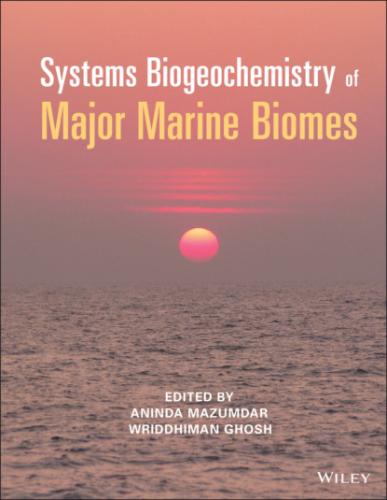72 Li, M., Toner, B.M., Baker, B.J. et al. (2014). Microbial iron uptake as a mechanism for dispersing iron from deep‐sea hydrothermal vents. Nature Communications 5: 3192. https://doi.org/10.1038/ncomms4192
73 Li, X., Zeng, X., Qiu, D. et al. (2019). Dissimilatory iron [Fe (III)] reduction by a novel fermentative, piezophilic bacterium Anoxybacter fermentans DY22613T isolated from East Pacific Rise hydrothermal sulfides. Geomicrobiology Journal 36 (4): 291–302. https://doi.org/10.1080/01490451.2018.1526985
74 Liesack, W. and Finster, K. (1994). Phylogenetic analysis of five strains of gram‐negative, obligately anaerobic, sulfur‐reducing bacteria and description of Desulfuromusa gen. nov., including Desulfuromusa kysingii sp. nov., Desulfuromusa bakii sp.nov. and Desulfuromusa succinoxidans sp. nov. International Journal of Systematic Bacteriology 44 (4): 753–758. https://doi.org/10.1099/00207713–44–4‐753
75 Lin, B., Hyacinthe, C., Bonneville, S. et al. (2007). Phylogenetic and physiological diversity of dissimilatory ferric iron reducers in sediments of the polluted Scheldt estuary, Northwest Europe. Environmental Microbiology 9 (8): 1956–1968. doi:10.1111/j.1462–2920.2007.01312.x
76 Lin, T., El Sebae, G., Jung, J.H. et al. (2016). Pyrodictium delaneyi sp. nov., a hyperthermophilic autotrophic archaeon that reduces Fe(III) oxide and nitrate. International Journal of Systematic and Evolutionary Microbiology 66 (9): 3372. doi:10.1099/ijsem.0.001201
77 Liu, H. and Wang, H. (2016). Characterization of Fe(III)‐reducing enrichment culture and isolation of Fe(III)‐reducing bacterium Enterobacter sp. L6 from marine sediment. Journal of Bioscience and Bioengineering 122 (1): 92–96. https://doi.org/10.1016/j.jbiosc.2015.12.014
78 Liu, L., Li, S., Wang, S. et al. (2018). Complex iron uptake by the putrebactin‐mediated and Feo systems in Shewanella oneidensis. Applied and Environmental Microbiology 84 (20): e01752–18. doi:10.1128/AEM.01752–18
79 Lonergan, D.J., Jenter, H., Coates, J.D. et al. (1996). Phylogenetic analysis of dissimilatory Fe(III)‐reducing bacteria. Journal of Bacteriology 178 (8): 2404–2408. doi:10.1128/jb.178.8.2402–2408.1996
80 Lovley, D.R. (2004). Potential role of dissimilatory iron reduction in the early evolution of microbial respiration. In: Origins. Cellular Origin, Life in Extreme Habitats and Astrobiology, Vol 6, (ed. J. Seckback), 299–313. Dordrecht: Springer. https://doi.org/10.1007/1–4020–2522‐X_19
81 Lovley, D.R. (2013). Dissimilatory Fe(III) and Mn(IV) reducing prokaryotes. In: The Prokaryotes (eds. E. Rosenberg, E.F. DeLong, S. Lory et al.), 287–308. Berlin, Heidelberg: Springer.
82 Lovley, D.R. (2017). Electrically conductive pili: biological function and potential applications in electronics. Current Opinion in Electrochemistry 4 (1): 190–198. https://doi.org/10.1016/j.coelec.2017.08.015
83 Lovley, D.R. and Phillips, E.J.P. (1998). Novel mode of microbial energy metabolism: organic carbon oxidation coupled to dissimilatory reduction of iron or manganese. Applied and Environmental MicrobiologyEnvironmental Microbiology 54 (6): 1472–1480.
84 Lovley, D.R., Derek, R., Roden, E.E. et al. (1993). Enzymatic iron and uranium reduction by sulfate‐reducing bacteria. Marine Geology 113 (1–2): 41–53. https://doi.org/10.1016/0025–3227(93)90148‐O
85 Lovley, D.R., Phillips, E.J., Lonergan, D.J. et al. (1995). Fe(III) and S0 reduction by Pelobacter carbinolicus. Applied Environmental Microbiology 61(6): 2132–2138.
86 Lower, B.H., Shi, L., Yongsunthon, R. et al. (2007). Specific bonds between an iron oxide surface and outer membrane cytochromes MtrC and OmcA from Shewanella oneidensis MR–1. Journal of Bacteriology 189 (13): 4944–52. doi:10.1128/JB.01518–06
87 Lower, B.H., Lins, R.D., Oestreicher, Z. et al. (2008). In vitro evolution of a peptide with a hematite binding motif that may constitute a natural metal‐oxide binding archetype. Environmental Science and Technology 42 (10): 3821–3827. https://doi:10.1021/es702688c
88 Lloyd, J.R., Leang, C., Hodges‐Myerson, A.L. et al. (2003). Biochemical and genetic characterization of PpcA, a periplasmic c‐type cytochrome in Geobacter sulfurreducens. Biochemical Journal 369 (1): 159–161. doi:10.1042/BJ20020597
89 Malvankar, N.S., Vargas, M., Nevin, K.P. et al. (2011). Tunable metallic‐like conductivity in microbial nanowire networks. Nature Nanotechnology 6 (9): 573–579. https://doi.org/10.1038/nnano.2011.119
90 Malvankar, N.S., Vargas, M., Nevin, K. et al. (2015). Structural basis for metallic‐like conductivity in microbial nanowires. mBio 6 (2): e00084–15. doi:10.1128/mBio.00084–15
91 Marsili, E., Baron, D.B., Shikhare, I.D. et al.(2008). Shewanella secretes flavins that mediate extracellular electron transfer. Proceedings of the National Academy of Sciences 105 (10): 3968–73. https://doi.org/10.1073/pnas.0710525105
92 Mehta, T., Coppi, M.V., Childers, S.E. et al. (2005). Outer membrane c‐type cytochromes required for Fe(III) and Mn(IV) oxide reduction in Geobacter sulfurreducens. Applied and Environmental Microbiology 71 (12): 8634–8641. doi:10.1128/AEM.71.12.8634–8641.2005
93 Meister, P., Bernasconi, S.M., Aiello, I.W., Vasconcelos, C., McKenzie, J.A. (2009). Depth and controls of Ca‐rhodochrosite precipitation in bioturbated sediments of the Eastern Equatorial Pacific, ODP Leg 201, Site 1226 and DSDP Leg 68, Site 503. Sedimentology56: 1552–1568. https://doi.org/10.1111/j.1365‐3091.2008.01046.x
94 Meister, P., Chapligin, B., Picard, A. et al. (2014). Early diagenetic quartz formation at a deep iron oxidation front in the Eastern Equatorial Pacific. Geochimica et Cosmochimica Acta 137: 188–207. https://doi.org/10.1016/j.gca.2014.03.035
95 Meister, P., Brunner, B., Picard, A. et al. (2019). Sulphur and carbon isotopes as tracers of past sub‐seafloor microbial activity. Nature Scientific Reports 9 (1): 604. https://doi.org/10.1038/s41598–018–36943–7.
96 Meitl, L.A., Eggleston, C.M., Colberg, P.J.S. et al. (2009). Electrochemical interaction of Shewanella oneidensis MR‐1 and its outer membrane cytochromes OmcA and MtrC. Geochimica et Cosmochimica Acta 73 (18): 5292–5307. https://doi:10.106/j.gca.2009.06.021
97 Mills, H.J., Reese, B.K., Shepard, A.K. et al. (2012). Characterization of metabolically active bacterial populations in subseafloor Nankai Trough sediments above, within and below the sulfate‐methane transition zone. Frontiers in Microbiology 3: 113. https://doi:10.3389/fmicb.2012.00113
98 Nielsen, L.P., Peterson, N.R., Fossing, H. et al. (2010). Electric currents couple spatially separated biogeochemical processes in marine sediment. Nature Letters 463 (7284): 1071–1074. https://doi.org/10.1038/nature08790
99 Oni, O., Miyatake, T., Kasten, S., Richter‐Heitmann, T.et al. (2015). Distinct microbial populations are tightly linked to the profile of dissolved iron in the methanic sediments of the Helgoland mud area, North Sea. Frontiers in Microbiology 6: 365. https://doi.org/10.3389/fmicb.2015.00365
100 Otero, F.J., Chan, C.H. and Bond, D.R. (2018).
